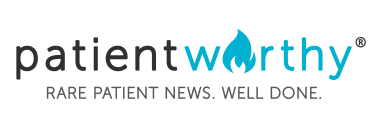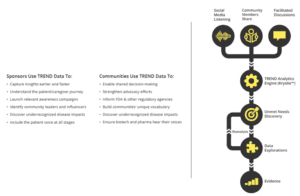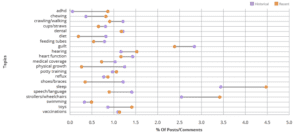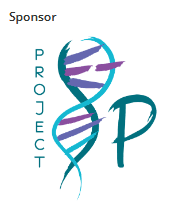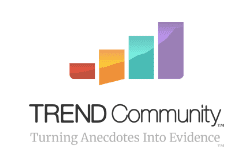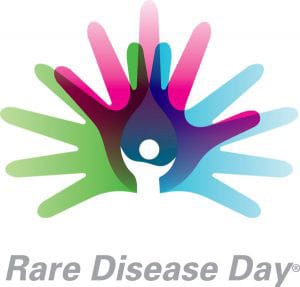In our third installment from our series of reports provided by our partner TREND Community, we are going to be focusing on a different condition over four weeks. This week we bring to you TREND’s launch report summarizing the Chromosome 8 community analysis showcasing the themes discussed over social media in 2023. To read week 1’s report on Myasthenia Gravis, click here and week 2’s report on IgG4-RD, click here.
TREND Community is a community-powered digital analytics company that turns the conversations of rare and chronic disease
communities into actionable insights. With the help of our community stakeholders, our AI engine, Krystie™, turns real-world
discussions into insights that can spark broader understanding and therapeutic progress. Patient Worthy is grateful to TREND Community for the permission to share this information.
Actionable Community Insights
The Role of Evidence in Progress
The pace of progress is always accelerating. Innovations in technology, combined with regulatory incentives, are helping biotechs and pharmaceutical companies bring therapeutics and medical devices to patients faster than ever.
Unfortunately, most innovations are limited to finding treatments for diseases that are already well understood—that is, innovation in the rare disease space is lagging. In fact, 95% of the 10,000+ rare diseases have no approved treatments.
True understanding of rare diseases is the bottleneck. That’s why the data and insights we capture from real patient voices are paramount to innovation. Our work unveils greater insights into disease presentation, symptoms, comorbidities, patient burden, and larger patterns. Ultimately, it is this holistic understanding that accelerates the development and approval of new therapeutics for which our communities are desperately waiting.
TREND’s Real-World Impact
From Community Voice Reports to peer-reviewed journals, the insights we glean from community
conversations are translating to real-world impact. Visit our website to view posters, reports, abstracts,
and other publications that we’ve co-created with our community partners.
“The Community Voice Report helped us evolve from a Facebook group to a respected organization that is making a real difference in the HIE community.”
—Betsy Pilon,
Executive Director, HOPE for HIE
How It Works
Trusted, Invite-Only Partnerships
We establish trusted, long-term partnerships with invite-only online communities that are formed organically by people affected by rare, chronic, and emerging diseases.
Proprietary Analytics
We harness machine learning and natural language processing techniques using Krystie™, our proprietary analytics engine that captures the perspectives and experiences of people within these trusted communities.
Evidence Acceleration
We discover insights on disease impacts and unmet needs. Our Community Voice Report and other real-world evidence can be leveraged for many different audiences and objectives.
Analysis Background
Chromosome 8p duplication-deficiency was first described by Weleber et al in 1976.1 Multiple chromosome 8p disorders (here called “8p”) have since been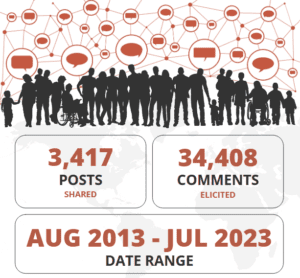
8p disorders are very rare, and only 350 people with the conditions have been identified.3 8p is thought to be the result of spontaneous errors that occur without a known reason in the early embryonic period of development. There have been some recently discovered cases in which the mutation was inherited, but the symptom presentation was different.3
Clinical signs and symptoms vary depending on the exact genetic mechanism; for instance, a deletion in the GATA4 gene was found to be associated with congenital heart defects, although some people with 8p had normal GATA4 expression and yet also had heart defects. 2
Other commonly reported signs and symptoms of 8p (prevalence of each varies by subtype) include neonatal issues (50%-100%; e.g., hypotonia, feeding difficulties, excessive sleepiness), developmental delay, short stature (11%-25%), craniofacial abnormalities, seizures(25%-55%), brain imaging abnormalities (40%-84%), constipation (25%-73%), neuro behavioral issues (43%-100%), gastroesophageal reflux disease (33%-56%), visual problems (50%-75%),cryptorchidism (25%-35%), dental problems (33%-56%), and skin problems (22%-45%). Given the variability and some discovered associations by subtype, it is important to determine subtype to inform prognosis and the degree of medical monitoring.
Mutations in the entire chromosome 8—the short arm, 8p, and long arm, 8q—have been implicated in various conditions, which include cleft lip and palate, Pfeiffer syndrome, Charcot-Marie-Tooth disease and types 2 and 4, Burkit lymphoma, and even schizophrenia.3
There is no cure for 8p, so treatment is based on specific symptoms.4 For young individuals with 8p, this means pursuing early intervention services to address developmental, speech, and motor skill delays.4 As they grow, people with 8p will often require a team of specialists to address specific symptoms through medication, therapies, and/or surgery. Family and individual support for those with 8p can be found through the Project 8p website (https://project8p.org/) and groups on social media platforms.
“It takes a team, from physical therapists, to teachers, to doctors. We are very fortunate to have a group of specialists around us.”
-Community Member
TREND analyzed 2 social media data sources for this report.
All sources were private Facebook groups dedicated to Chromosome 8p:
Chromosome 8p Disorder Parent Support Community
Project 8p Community
Trending Clinical Concepts
The Tree map contains the most frequently mentioned clinical domains and their relative concepts, with Sign or Symptom at 40.0%, Disease or Syndrome at 25.9%, Mental or Behavioral Dysfunction at 23.4%, and Congenital Abnormality at 10.6%. The map is colored by the percentage of mentions recently (2019-2023) vs historically (2013-2018). The more purple a concept, the more it was mentioned recently, and the more orange a concept, the more it was mentioned historically (e.g., 8.9% increase in ADHD mentions recently, 18% decrease in Autistic Disorder mentions recently). The bigger a box, the more a term was mentioned overall (e.g., Seizures mentions were the highest in Sign or Symptom).
Top Clinical Findings and Substances
TREND’s engine is trained to identify terms related to clinical language. Through this process, we can see the most frequently mentioned clinical concepts across clinical/medical domains. Two overarching clinical categories are presented here: Clinical Findings and Substances. “Clinical Finding” refers to any sign, symptom, or other phenomenon related to a disease and its presentation. “Substances” refers to any medication, biomarker, food, or other physical matter that was mentioned.
The top figure to the right illustrates the most common clinical findings discussed historically (2013-2018) vs recently (2019-2023) across all domains. The bottom figure to the right illustrates the most common substances discussed historically (2013-2018) vs recently (2019-2023).
Frequently Asked Questions
Community members often turn to their online support groups to find answers. Their questions can provide us with insights into the unmet needs of the community. We analyzed the most frequently discussed topics to determine what proportion of those conversations included questions. This figure shows the highest-frequency topics (y-axis) and the percentage of conversations that included questions (x-axis).
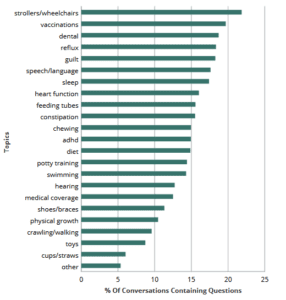
Shifts in Conversation Over Time
Medical advancements have the potential to profoundly impact and reshape the characteristics of diseases over time. By actively listening to the community, we can gain valuable insights into these shifts when they happen. Our analysis involves clustering language with similar meaning that appears together often. This process is called topic modeling. This figure shows the most frequent conversation topics and their shifts historically vs recently. We see in the figure that the topics that have experienced the largest growth in conversations include sleep, strollers/wheelchairs, and ADHD.
Network Analysis
This figure reflects the Physician network in the chromosome 8p community, providing a general indication of the clinical findings that might be most frequently discussed with medical professionals. In this network, we see reference to both acute (e.g., constipation, vomiting, fever) and chronic/long-term (e.g., seizures, muscle hypotonia, scoliosis) findings.
Discovering Unmet Needs
Mental and Cognitive Impacts
We see one of the 4 largest clinical domains discussed being mental or behavioral dysfunction, which includes large shifts in diagnoses discussed (e.g., ADHD, autistic disorder). Conversations about ADHD were composed of 15% questions. Given such large shifts in discussed mental/behavioral diagnoses and a large proportion of questions on related topics, the role of mental and cognitive comorbidities may not be well understood in the community.
Mental Health
One of the larger topics discussed, both historically and recently in the community, was guilt. Nearly 20% of conversations about guilt included questions. This seems to show an area where caregivers could benefit from additional support resources.
Nutrition
In the absence of a cure, patients with 8p are treated for specific symptoms, with nutrition and gastrointestinal (GI) issues representing a significant part. Constipation and vomiting were both mentioned more recently than historically and constipation was in the top 3 clinical findings. Nutritional concerns persist, and additional issues ranging from neonatal feeding problems to reflux and a need for feeding tubes should be addressed. Some issues have to be treated surgically or with medications, and these concerns continue throughout the life of someone with 8p. More support and treatments are needed in this area.
Medical Coverage
As shown in this report, strollers/wheelchairs were a prominent topic in recent conversations, and almost a quarter of conversations about them involved questions. That plus the mention of other aids, devices, and therapies and of medical concerns requiring intervention, such as scoliosis, means that families will have ongoing needs regarding medical coverage for their child.
“As parents, we need streamlined care and information readily available.”
-Community Member
Appendix
Endnotes
1 Weleber RG, Verma RS, Kimberling WJ, Fieger HG, Lubs HA. Duplication-deficiency of the short arm of chromosome 8 following artificial
insemination. Ann Genet. 1976;19:241-247.
2 Okur V, Hamm L, Kavus H, et al. Clinical and genomic characterization of 8p cytogenomic disorders. Genet Med. 2021;23(12):2342-2351.
doi:10.1038/s41436-021-01270-2
3 About chromosome 8p disorders. Project 8p. 2022. Accessed August 5, 2023. https://project8p.org/chromosome8p
4 Chromosome 8p, monosomy 8p. National Organization for Rare Disorders (NORD). Updated April 8, 2009. Accessed August 5, 2023.
https://rarediseases.org/rare-diseases
Acknowledgments
Thank you to the Project 8p community members for sharing their experiences. We are grateful to Bina Shah and Kaiti Syverson for enabling access to the data used to create this report, providing their thought leadership, and amplifying the voices of people living with chromosome 8p by co-sponsoring this Community Voice Report.
About TREND Community
Founders & Values
1514©Copyright TREND Community™ 2023 Founders & Values TREND Community™ was founded by the parents of a child with Prader-Willi syndrome who understand the needs of the rare and chronic disease community.
We Lead with Empathy
We lead and listen with empathy toward each other, our partners, and our communities.
We Amplify Voices
We believe that every voice has the power to make positive change.
We Are Transformational
We believe that our approach has the potential to change the lives of people living with rare, chronic, and emerging diseases and alter the course of disease management for the better.
Security
TREND secures all social data using state-of-the- art, private cloud servers. To protect community member privacy, conversation data from closed groups are anonymized, and the raw conversation data are never shared.
Disclaimer
The researchers who prepared this report are not doctors, are not providing medical advice, and are only reporting what was said in the online conversations.
IRB Exemption Status
Western Institutional Review Board determined that this study is exempt under 45 CFR §46.104(d)(4).
Quotes
All quotes were provided by consenting community participants through online surveys, one-on-one interviews, or online focus groups. Names are not included to protect participants’ privacy.
Data Ownership
Ownership of public posts or conversations from other social media platforms shared with TREND for analysis is subject to the social media platform’s privacy policy, terms of service, and other applicable policies. TREND Community owns the results of our analysis and all other data and output we produce, including our Community Voice Reports.
License
Copyright ©2023 TREND Community™. This Report and its contents are subject to all applicable copyright laws. This Report may be shared and viewed for personal, internal review and noncommercial purposes only. Duplication, distribution, or use of its content in any form or media must maintain prominent attribution to TREND Community and include the Report’s title. Except as may be otherwise permitted in writing in advance by TREND Community, any other us of this Report is strictly prohibited, and TREND Community reserves all rights to prosecute any violations and is entitled to all rights and remedies available under law or in equity. Any use not otherwise permitted will require a written license from TREND Community, and any such use will be governed by the terms and conditions of such TREND Community License Agreement.
